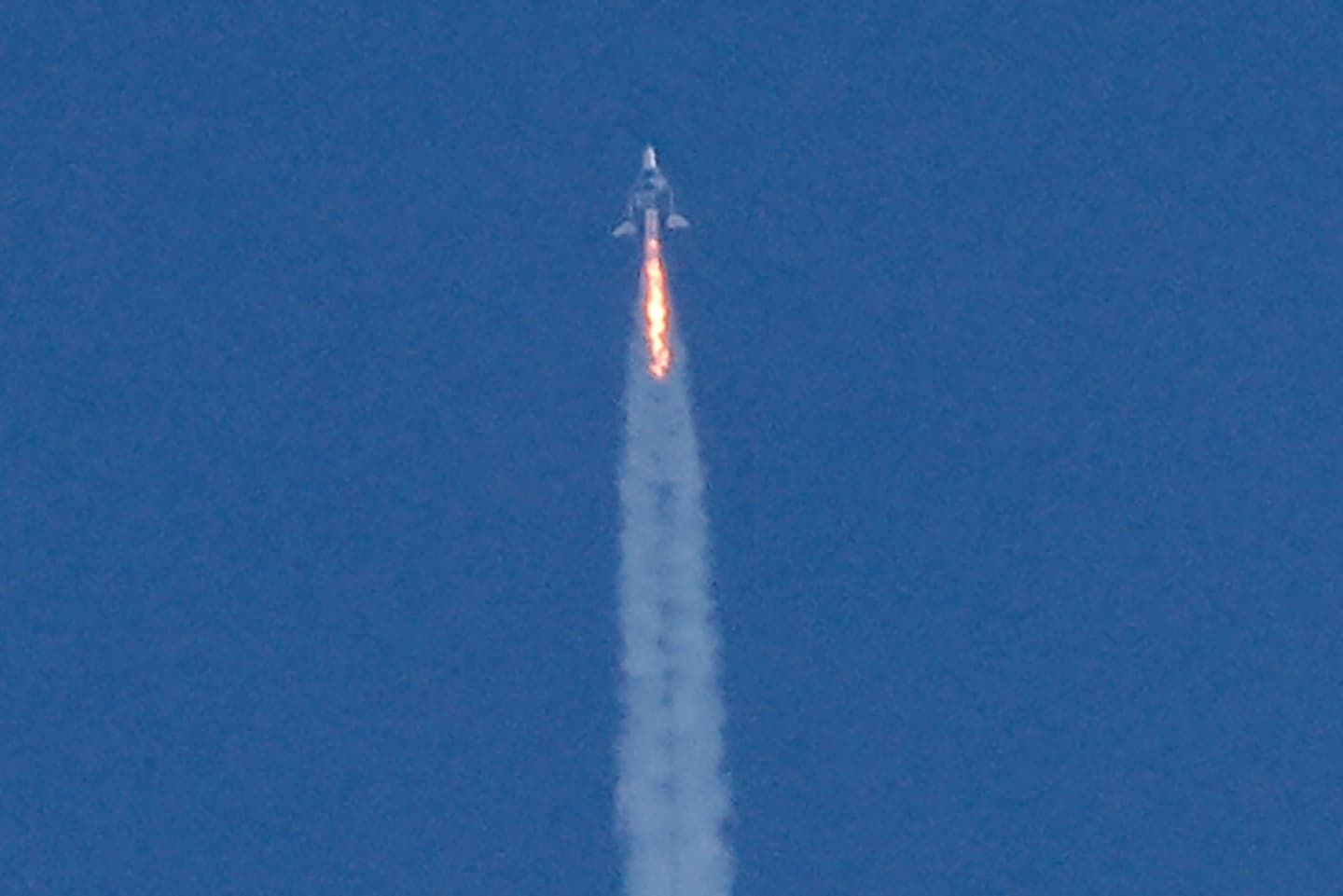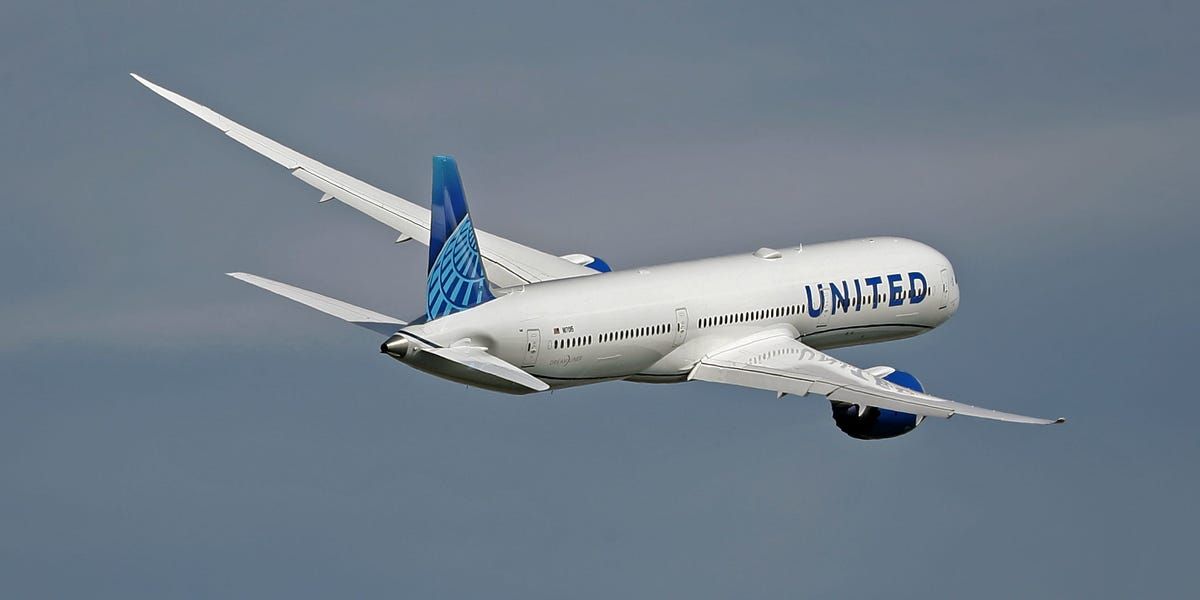Virgin Galalctic plane reaches space
Listen 5 min Comment on this story Comment Gift Article Share
Virgin Galactic flew six people — a crew of four and two pilots — just past the edge of space Thursday in its first suborbital test flight since Richard Branson boarded the company’s space plane two years ago. Tech is not your friend. We are. Sign up for The Tech Friend newsletter. ArrowRight The company has said that after it completed the flight it would finally be ready to start flying its backlog of paying customers, many of whom have waited years while Virgin Galactic struggled with technical and financial challenges.
Flying from Spaceport America, the taxpayer-supported futuristic spaceport in the New Mexico desert, the company’s mother ship carried the spacecraft, known as SpaceShipTwo Unity, aloft before releasing it at an altitude of 44,500 feet, or just over 8.4 miles. The pilots then fired Unity’s engine, pointed the craft vertically and headed toward space.
The company announced that the plane reached an altitude 54.2 miles. The Federal Aviation Administration recognizes the edge of space as 50 miles.
Advertisement
The six people onboard experienced a few minutes of weightlessness before strapping back into their seats for the glide back to Earth. The space plane landed at 12:37 p.m. Eastern time.
In an interview after the flight, Mike Moses, Virgin Galactic’s president for spaceline missions and safety, said the ship appeared to be in very good shape and that the company was ready to press ahead with its first commercial flight, with four members of Italy’s air force, at the end of June. He said the company could fly about “once a month from now through the end of the year."
“I’m ever the engineer,” he said. “So we’ll go look at our data. We’ll pour through everything. We’ll make sure we slice and dice all the numbers. But there is nothing today that says we’re not on track.”
Virgin Galactic has charged as much as $450,000 per ticket.
Advertisement
On the flight were six Virgin Galactic employees: Jamila Gilbert, the director of internal communications; Chris Huie, a flight sciences engineer; Luke Mays, an astronaut instructor; and Beth Moses, the company’s chief astronaut instructor, who has now flown to space three times with the company. The pilots were C.J. Sturckow and Mike Masucci.
The crew had a great flight, Moses said. “I don’t think they’ve stopped smiling yet,” he said.
The company did not allow media on-site to cover the mission. Instead the company issued updates on its Twitter account.
The flight comes as the company has been bleeding cash, and as a tightening economy has forced a reckoning in the commercial space industry.
On Tuesday, Virgin Galactic’s sister company, Virgin Orbit, announced that it was selling its assets and ceasing operations after it failed to find a buyer that would deliver it from bankruptcy. Like Galactic, it depended on an “air launch” design, in which the rocket was tethered to a plane — in Virgin Orbit’s case, a 747 — before heading to space.
Advertisement
In its last earnings report, Virgin Galactic reported that it had lost $159 million in the first quarter of this year compared with a $93 million loss a year earlier.
The two-year hiatus was the result of a campaign to refurbish its systems, including the carrier plane known as WhiteKnightTwo. It also focused on developing an upgraded space plane called the Delta Class that the company says will be easier to maintain and could fly more frequently. But those spacecraft won’t be ready to fly people until 2026.
Branson first bought the rights to the technology behind the spacecraft in 2004, after SpaceShipOne became the first privately funded craft to reach space. For years, Virgin Galactic struggled to develop a more robust space plane capable of taking paying customers. And in 2014, during a test flight, the space plane came apart, killing one of the pilots and severely injuring the other.
Advertisement
That setback further delayed the company’s plans. In its investigation, the National Transportation Safety Board found that the company failed to properly train its pilots and did not implement basic safeguards to prevent the human error that caused the accident.
By 2021, the company was ready to fly again. And Branson jumped at the opportunity, calling it a “magical” experience that the company hoped would kick off its commercial service. But the next expected flight never took place. Instead the vehicle was grounded for lengthy upgrades.
The company also faced competition from Jeff Bezos’s Blue Origin, which uses a more traditional rocket and spacecraft that launch vertically to reach the edge of space. (Bezos also owns The Washington Post.)
Blue Origin has flown six missions with people, including Bezos’s flight nine days after Branson’s. But during a flight in September in which no people were onboard, the New Shepard booster suffered an engine failure, forcing the spacecraft’s emergency abort system to ignite. The company has said it has identified the cause of the problem and continues to work with the FAA. It has not yet said when it might attempt to launch again.
GiftOutline Gift Article
Source: The Washington Post


